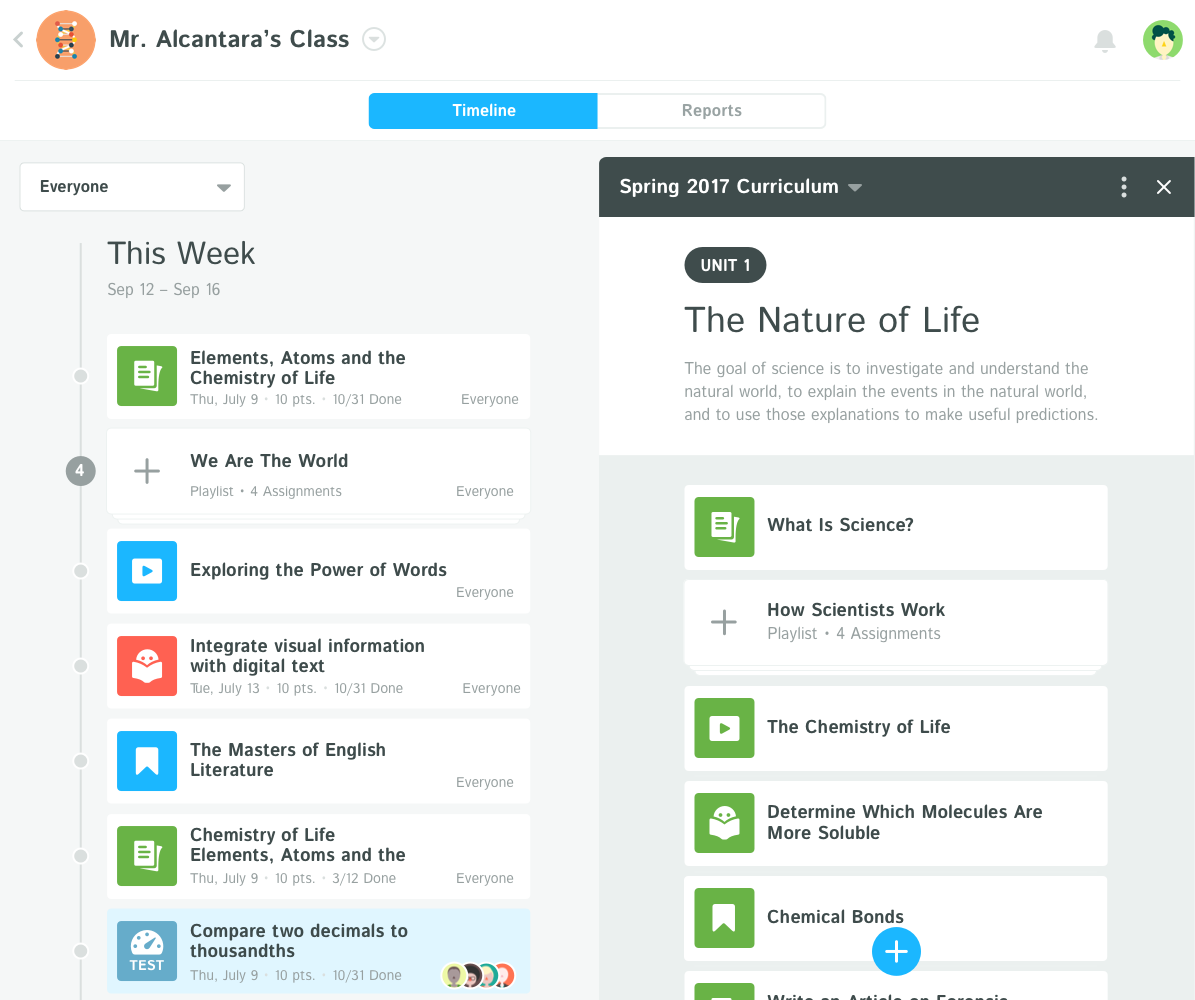“We’ve blocked three days off leading up to the first day of school for curriculum and lesson planning. You’ve got time to plan ahead.”
When school leadership made this announcement in August during our staff training, I immediately felt overwhelmed and confused. I was a first year math teacher placed at a brand new, alternative high school serving at-risk youth in New York City. Despite my lack of experience, I was tasked with teaching Algebra 1, a course culminating in a standardized test all New York high school students must pass to graduate. I knew three days of planning wouldn’t be enough to design flexible curriculum that could empower every student to have an “aha!” moment every day.
Unfortunately, the feeling that there’s never enough time to write and adjust curriculum is a major source of frustration and a bitter reality for teachers across the United States. Beginning that very first year in my Algebra classroom, I've strived to make it easier for educators to design their own curriculum.
Because I taught at a competency-based (a.k.a. standards-based) school for at-risk youth, pre-packaged curriculum and assessments offered very little flexibility for personalization or modification. The content was prescriptive and standardized, which meant taking it apart to meet student needs sometimes took longer than just making it myself. Plus, the available content was designed around how much time I’d spend teaching it versus what I actually needed to get students adept at learning the topic at hand. With students on my roster performing at a range of grade levels from elementary to beyond high school, I decided against bundled curriculum and textbooks and instead committed to building an in-house curriculum tailored to my students’ needs.
If that sounds like a lot of work, it was. But writing curriculum wasn’t just labor-intensive, it was emotionally exhausting. I put my heart and soul into plotting the journey my students took with me. There are thousands of teachers doing this kind of work at any given moment. And while this practice might be best for students, it’s unsustainable given how many responsibilities teachers already juggle.
Despite the immense amount of work involved, my colleagues and I fine-tuned our curriculum every year based on student skill gaps and results from formative assessments. We experimented with online curriculum products such as Rubicon and BetterLesson as well as adaptive learning programs such as Cognitive Tutor and Math 180 to supplement our custom curriculum—but it was virtually impossible to get the kind of flexibility we wanted without sacrificing quality. To somewhat quote Darth Vader, I found the lack of quality edtech curriculum deeply disturbing. This was at odds with my experience, because I relied extensively on edtech for assessments. I taught in a school with high rates of chronic absenteeism, so it was vital students could demonstrate mastery without having to physically show up to class.
As I gained more experience teaching, I realized the most effective curriculum for students should provide a variety of options for assessment and instruction. Beyond a library of PowerPoint slides, my mathematics curriculum evolved into a patchwork of in-house and free online resources following a scope and sequence specifically tailored to meet my students’ needs. They could easily access a library of lessons and assessments I’d created from scratch, or use Khan Academy videos coupled with IXL exercises aligned to standards we were learning in class. It took a lot of time and effort to curate the best resources from the surplus of providers, but it was worth it; I learned a lot about my students and my students learned in a way most suitable for them.
Curriculum design is fundamentally emotional work, representing the journey educators plan for students to make meaningful connections with concepts. At Kiddom, we understand the benefits of a homemade approach to curriculum, but we also recognize the incredible burden this practice can add to teachers’ lives. That’s why I’m proud to announce that Kiddom’s Planner will soon be available. It’s a curriculum tool designed specifically to offer teachers the flexibility they need to meet the needs of 21st century students. With the Planner, teachers can design curriculum for a class and easily modify pathways for groups or individual students. The Planner will be integrated with the Kiddom platform, which means teachers can effectively plan, assess, and analyze learning from one place.

Well-designed and differentiated curriculum affords teachers the opportunity to help students meaningfully connect with the subject matter and expand their skill sets. It must offer the flexibility to individualize learning in real-time based on student needs without inconveniencing teachers. Teachers can’t sustainably inspire students if they’re overburdened and inadequately equipped.
My experience has taught me to believe that it is possible for technology to ease administrative burdens and increase the quality of interactions between teachers and students. If teachers can use technology to thoughtfully guide individual students through the learning process, then we can expect every student to learn what’s necessary their own way: to have their own “aha!” moment. And as teachers, we know those are the moments that really matter.
Eight Resources for Designing Competency-Based Curriculum
- SBG 101: An Introduction to Standards-Based Grading
- SEL 101: Bridging Social Emotional Learning with Academics
- Using Playlists to Differentiate Instruction
- Curriculum Model for Mastery-Based Learning
- SBG: A Practice That Lends to Better Curriculum Design
- Standards-Based IEPs: What You Need to Know
- Introducing Content Integrations
- My Technology Philosophy: LMS vs. Tool Belt



